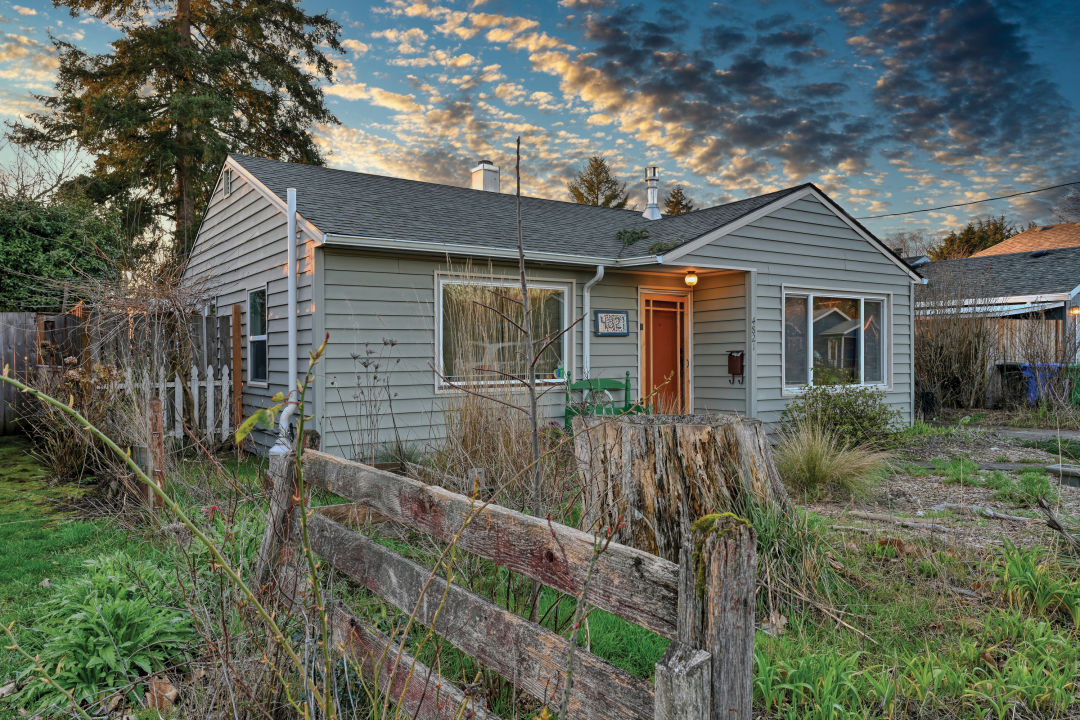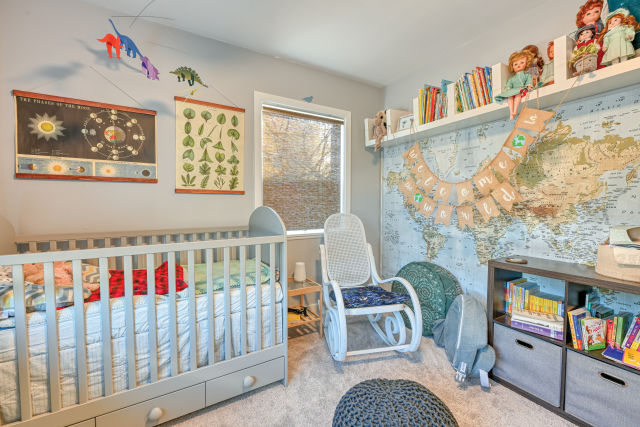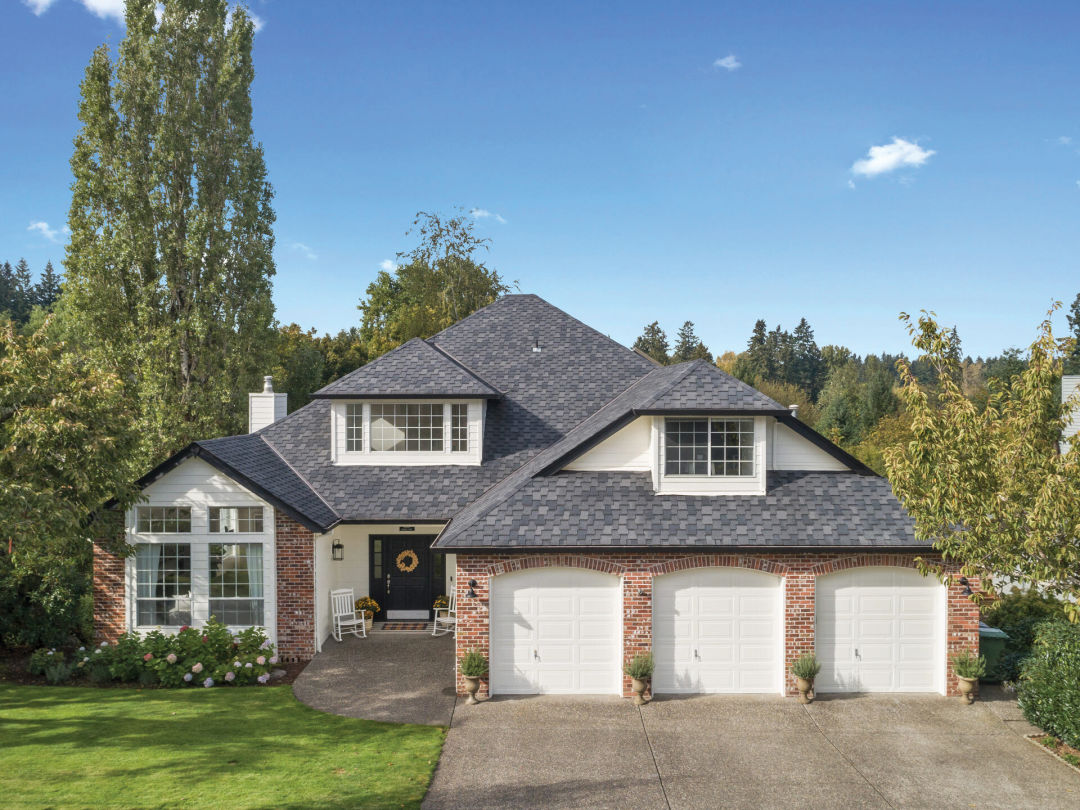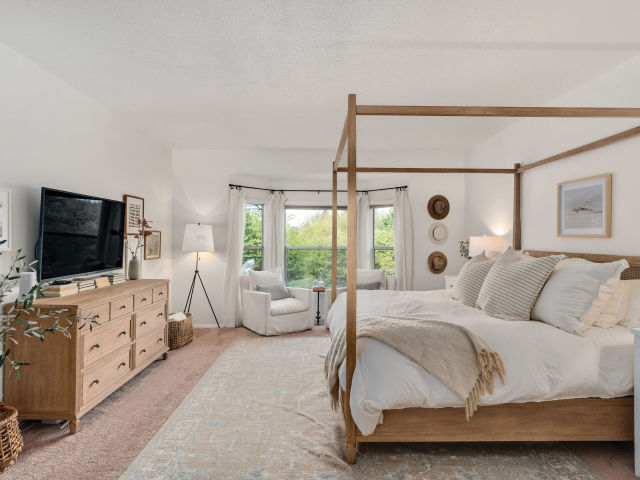What Happened After the HGTV Cameras Stopped Rolling for These Oregon Homeowners?
If, like so many, you were on the lookout for some escapist, not-too-taxing television over the past year, there’s a solid chance that at some point you landed on HGTV’s venerable House Hunters.
The show never messes with its comforting formula. The titular house hunters are on the lookout for a home and visit three possible choices, Goldilocks-style, to determine which one is just right. There’s always some friendly bickering, often an expressed desire for granite countertops, double vanities in the master bath, and/or a “man cave,” plus a few mild attempts from the agent to show what could be had for just a scooch more budget. It all ends happily ever after, with a coda featuring the new homeowners snug in their chosen abode.
Over the years, Portland and environs have starred in our fair share of episodes, starting from back in the day when $200,000 was enough to purchase a three-bedroom, two-bath Craftsman in close-in Southeast. And so, we had to know—what happened to the local homeowners after the cameras were gone, and the five days of filming were edited into one tight 22-minute package that lives on forever via reruns and streaming?

The Woodstock home where Caughman and McGinnis found their hygge.
Image: Courtesy Chad Meier
“Portland Proud”
First aired June 2019
Liliana Caughman, a professor at Northwest Indian College, filled out the application for House Hunters on a whim. She expected it to go into a black hole; instead, two days later, she received an “extremely enthusiastic email—like 12 exclamation points,” from a producer, and she and her partner, Megan McGinnis—plus their agent, Chad Meier of Living Room Realty—were officially ready for their 15 minutes.

Nico's bedroom
Image: Courtesy Chad Meier
(Side note: Officially, the show is cagey about its methods, and contestants, including all those interviewed here, have signed complicated nondisclosure agreements. But Slate, the Washington Post, and others have reported that when the show is filmed, the “hunters” are typically already in contract on a home to which they’ve agreed to wait to move into; the other two homes toured during the show are there for dramatic effect.)
Par for the course for reality television, Caughman and McGinnis were gently nudged to play up their supposed differences for the camera—in their case, Caughman’s skepticism over McGinnis’s ability to manage DIY home-reno projects. In reality,
Caughman says, she didn’t doubt her partner, and in the months since filming they’ve redone the bathroom and kitchen floors on their own, installed new carpeting, redone their baseboards, replaced their refrigerator and dishwasher, and tended to the garden that sold them on the house in the first place. (They’ve also added their baby boy, Nico, born last fall.)
One thing that wasn’t manufactured: the couple’s mutual devotion to hygge, loosely translated as Scandi-style coziness, which was referenced approximately 17 times during their episode. The house they chose, a Woodstock bungalow with a backyard grape arbor that sealed the deal, scored high on the hygge test. They’ll search for that same quality when they eventually seek out more space as their family grows, they say—a process they’d be happy to document for a House Hunters sequel. In the meantime, minor fame will have to do: Caughman says they’ve been stopped at the airport by a woman who gushed theirs was her all-time favorite episode.

The Tualatin home, after the Neads made some big changes
Image: Courtesy Lindsay Nead
“Purchasing in Portland”
First aired February 2020
Tyson and Lindsay Nead, who run a talent management agency, had been living in a Forest Heights condo when they agreed to be on House Hunters in late 2019; the “conflict” between the two was that she wanted to go more traditional, while he was holding out for a midcentury-modern vibe. In an unlikely twist, they wound up in a suburban home in a Tualatin cul-de-sac, and promptly set about changing everything about it: “We changed the deck, we changed the house color, we updated the interior, we put in quartz countertops, we finished painting all the things they had started,” Tyson says.

Fresh paint in the bedroom
Image: Courtesy Lindsay Nead
And then they moved out.
“Tyson and I, we really thought finding that home in Oregon would keep us wanting to be there longer,” Lindsay says. “We were obsessed with our house. But on the outside, beyond our home, we missed sunshine.”
In the fall of 2020, they headed south, landing in a rental near Lindsay’s family in San Diego for now. She’s pregnant with their second child, and their eventual plan is to hit the road, with stops in Austin, Nashville, and Charlotte, seeking a new place in the sun.
“Author Seeks Vintage Charm in Oregon”
First aired November 2017
For Kelly Williams Brown, a writer and nonprofit communications consultant, her nonnegotiable was a bathtub.
“I take an exceptionally high number of baths,” she says.
Perhaps that explains the distinctly downcast expression on her face during one of the three home stops on her episode, in which she was filmed sinking in despair onto the floor of the shower in a tubless master bathroom. (Her other turnoffs: open-concept floor plans, with kitchen clutter always on display, and living rooms oriented around the ubiquitous giant TVs mounted above the fireplace.)
Spoiler alert: She didn’t buy that tubless house. She is, however, still in the 1930s-era home she did buy in Salem, an English cottage with a tall, pointy, fairy-tale-tower roofline, across the street from a park with towering old-growth trees.
It’s been an education, she says, learning how to maintain a 1930s house—no one tells you when to replace the water heater, say, or how often to clean out the lint hose on your dryer. But she’s made changes over the years, including some that resulted in more toucans, botanicals, and pink than match her current taste (she’s redecorating), plus painting the dining room her favorite shade of navy.
“It is interesting how you have a relationship with a house that deepens,” Williams Brown says. “Now I know all the sounds my old house is supposed to make, and all the ones it isn’t, though I can still find a new little plant in the yard that surprises me. A house is an object, the most expensive and valuable object that I will ever own. It is hard to maintain, but truly satisfying. When I walk in the door and close it, this is my space.”




